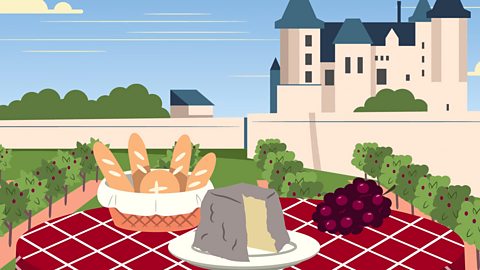What is Antarctica?
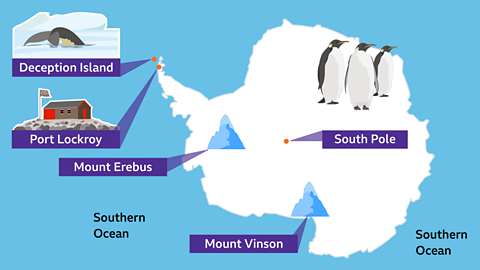
- Antarctica is in the southern hemisphere.
- It is a large continent covered by ice.
- No one lives in Antarctica permanently but some scientists and explorers can live there for short periods of time. They stay to do experiments and find out more about the ice and snow.
- Antarctica is surrounded by the Southern Ocean.
- More than 100 years ago explorers tried to reach the South Pole which is near the middle of Antarctica.
What is Antarctica like?

- It is the coldest, windiest, and driest continent on Earth.
- There is no one country in charge of Antarctica. Lots of countries have said they will work together to protect it.
- Mount Vinson is the highest mountain in Antarctica - it's 4,892 metres tall.
- Mount Erebus and Deception Island are volcanos in Antarctica.
- In the summer it is light for 24 hours of the day. In the winter months it is always dark.


Watch: Explore Antarctica
Chrissie: Freya, open up! It’s freezing out here!
Freya: Hey Chrissie, you know about Antarctica, I need your help!
Uncle Bob is on an expedition to the South Pole, and he sent me a photo of his frozen baked beans but I don’t know where to place it on the map.
Chrissie: Well, Antarctica is way down in the middle of the Southern Ocean, so we’ll need a map that’s looking right down on it.
Freya: Ah, that’s better, it looks loads bigger than the UK!
And it looks like it’s completely covered in snow and ice.
Where could Uncle Bob have been?
Chrissie: Well Antarctica is the coldest, driest and windiest continent in the world, so maybe he sheltered near those big mountains that run down the middle.
Let’s visit that one, Vinson Massif!
Freya: That’s a huge mountain, more than three times higher than the biggest mountain in the UK!
And look, the clock says that it’s nearly midnight but the sun is shining.
Chrissie: Yeah, during the summer in Antarctica the sun never sets so it’s light all the time!
Freya: I don’t think Uncle Bob was here.
Chrissie: Let’s try the Antarctica Peninsula, with the sea all around it!
Freya: Look at all the floating ice.
Chrissie: Yeah, the ice goes over the land and the sea, and scientists have noticed that the warm sea water is melting some of the ice, causing sea levels to rise all around the world!
Oh no, a blizzard!
Freya: Is that some people?
Chrissie: Haha, nothing lives on Antarctica apart from a few animals, like penguins!
The only people here are scientists.
In fact, he was probably at one of the research stations, like this one, investigating ways to protect the planet!
Freya: This must be where he took his photo!
Chrissie: You need to see this place in the winter though.
Freya: Ooh, the amazing Southern Lights over the South Pole!
It’s giving me chills!
Chrissie: No, sorry, I left the garage door open! Hahaha.
Why are there no children in Antarctica?
- The only children in Antarctica might be ones who go on holidays with their families. No children live in Antarctica. It would be too cold to grow up there.
- In parts of Antarctica the winter temperature can be minus 60В°C.
- Scientists do experiments to see how the cold affects humans of the world. They also look at the animals and any plants.
Watch this short video from ґуПуґ«ГЅ Bitesize to see more of wildlife and nature that can be found in Antarctica.
Let's compare – Antarctica and the UK

- Antarctica is a long way south from the UK. It is bigger than Europe.
- You cannot grow any crops on ice and snow so there is very little food other than fish.
- People can travel to Antarctica by boat.
- Another way to reach Antarctica is by air.

Did you know?

There is a post office at Port Lockroy in Antarctica.
It is nicknamed the Penguin Post Office because there are lots of penguins living nearby.
It can take months for post to arrive from here. The post office is only open for part of the year.
Activity 1: What can you see in Antarctica?
Activity 2: Quiz – Antarctica
Play Bitesize Primary games. game
Fun and educational primary games in science, maths, English, history, geography, art and design, computing and modern languages.

More on Explore the world
Find out more by working through a topic
- count15 of 15
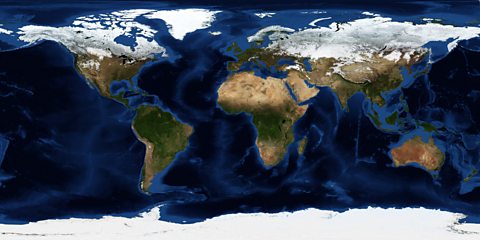
- count1 of 15
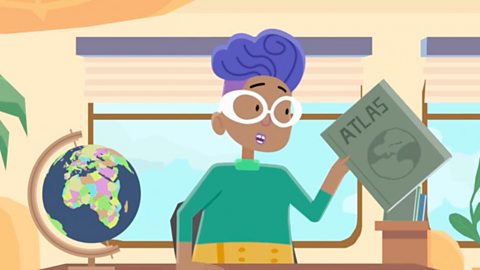
- count2 of 15
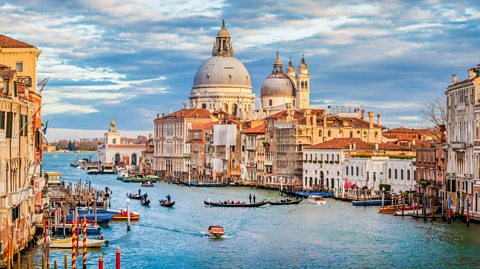
- count3 of 15
